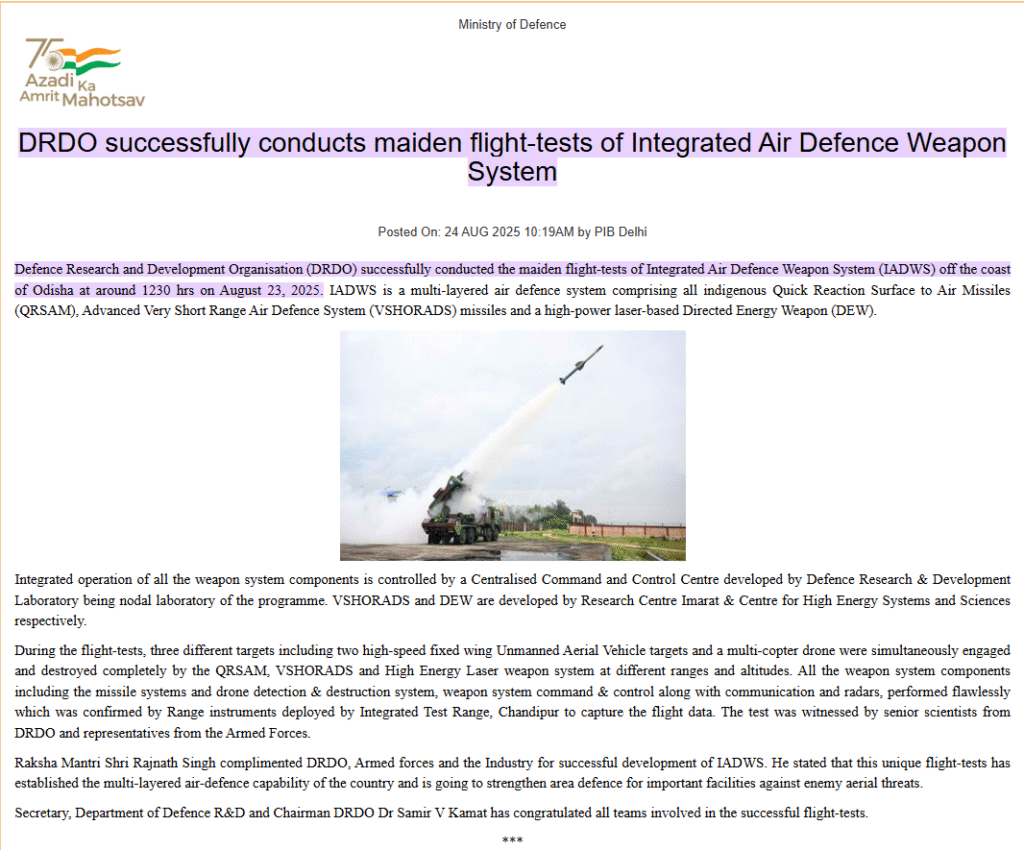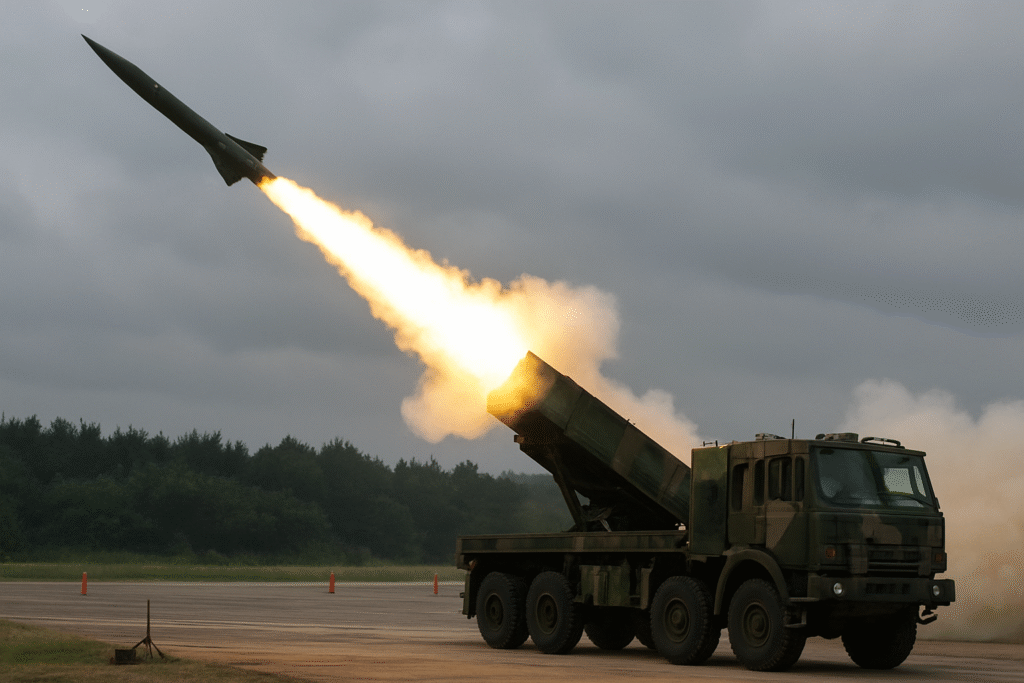India on Saturday successfully carried out the maiden flight-tests of its Integrated Air Defence Weapon System (IADWS) off the coast of Odisha, in a significant step towards strengthening national air defence under Project Sudarshan Chakra.
The Defence Research and Development Organisation (DRDO) said the multi-layered system integrates Quick Reaction Surface-to-Air Missiles (QRSAM), Very Short Range Air Defence Systems (VSHORADS), and a Directed Energy Weapon (DEW), designed to work together to neutralise a range of aerial threats.
A government statement issued Sunday confirmed that the inaugural trial involved three aerial targets — two high-speed fixed-wing UAVs and a multi-copter drone — all of which were simultaneously engaged and neutralised.
“All components of the weapon system, including missile systems, drone detection and destruction systems, command-and-control, communication and radars performed flawlessly, which was confirmed by range instruments deployed at the Integrated Test Range, Chandipur,” the statement said.
Defence Minister Rajnath Singh congratulated DRDO, the armed forces and the defence industry. “This unique flight test has established the multi-layered air defence capability of our country and is going to strengthen area defence for important facilities against enemy aerial threats,” he posted on ‘X’.

System design and operation
Officials explained that IADWS functions as a layered, network-centric shield. At its core is a Centralised Command and Control Centre (C2C2), which integrates radar and sensor feeds to generate a real-time air picture. Based on velocity, altitude and flight path, threats are assigned to the most effective interceptor.
The QRSAM, mounted on high-mobility vehicles, forms the outer layer with a strike range of 25–30 km. VSHORADS provides close-in defence against low-flying aircraft and drones up to 6 km. The innermost tier, the Directed Energy Weapon, developed by DRDO’s Centre for High Energy Systems and Sciences, uses high-power lasers to disable drones and electronics.
Strategic importance
Experts said the system addresses both conventional aerial threats such as cruise missiles and asymmetric threats like drone swarms. It is expected to protect forward bases, radar sites, nuclear facilities, and critical infrastructure.
Military analysts noted that integrating a directed energy weapon places India among the few countries experimenting with operational non-kinetic defence systems.
Further trials are expected before the system moves to user evaluation by the Indian Air Force and Army Air Defence. Production is likely to involve collaboration between public-sector units and private industry, with potential export prospects in the future.


